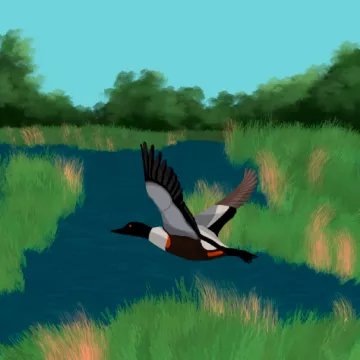
The Water and Wetlands Stewards recently dipped their toes into the muddy waters of regulation by considering water and wetlands protections at the federal, tribal, state and local levels. There was a lot to take in! Here is our basic primer on the history of federal water protection.
First Steps toward Clean Water
In 1948 Congress passed the Federal Water Pollution Control Act (FWPCA), the first major U.S. law to address water pollution. This act authorized the Surgeon General to prepare comprehensive programs for eliminating or reducing the pollution of interstate waters and tributaries and improving the sanitary condition of surface and underground waters. It also authorized the federal government to assist states, municipalities, and interstate agencies by constructing treatment plants to prevent discharges of inadequately treated sewage and other wastes into interstate waters or tributaries.
The Clean Water Act
After Ohio’s Cuyahoga River in Ohio caught fire (again) in 1969, growing water pollution concerns led to sweeping changes to the FWPCA. The amendments gave the young Environmental Protection Agency (EPA) the authority to regulate pollutant discharges into the waters of the United States (WOTUS). The law became known as the Clean Water Act.
The Clean Water Act authorized the EPA and the U.S. Department of the Army to define WOTUS, initially protecting wetlands “adjacent to” navigable waters. Subsequently, the EPA promulgated rules to clarify what adjacency meant, leading to numerous court cases and rule changes from administration to administration.
The Sackett Case: What Are The Waters Of The US?
In 2022 Michael and Chantell Sackett began backfilling parts of their property near Priest Lake, Idaho, intending to build a house. This property included wetlands connected by a creek to a lake. The EPA ordered the Sacketts to restore the site and threatened a fine of $40,000 per day.
The Sacketts sued the EPA. The case made its way to the US Supreme Court, which rejected the EPA’s contention that the Sacketts’ wetlands were protected under the Clean Water Act. The court ruled that protected wetlands must have “a continuous surface connection that makes it difficult to tell where the water ends and the wetland begins.” The Sacketts were vindicated and now wetlands that have significant value and possible subsurface connections are imperiled.